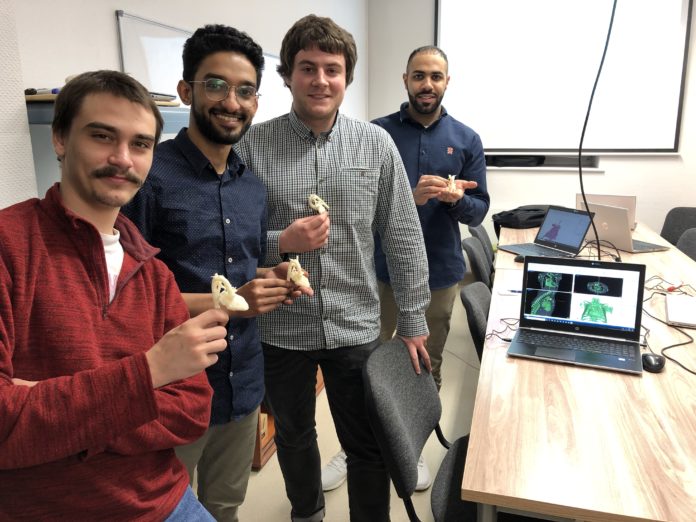Polish University launches its first elective lecture dedicated to medical 3D printing
The dynamic development of 3D printing technology and medical imaging has made it possible
to combine these solutions facilitating the creation of patient-specific anatomic models. To date they have been used primarily for better spatial imaging of pathologies in patients and planning interventions or surgical treatment of specific cases. Scientists at the Department and Clinic
of Pediatric Cardiology and Congenital Heart Defects at the Medical University of Gdańsk are proving that this is the future of not only medicine focused on specific individuals but also of modern education in medicine. The Medical University of Gdańsk’s specialists have been working intensively for more than 3 years on a project to harness 3D printing in pediatric cardiology. They have resolved to utilize the experience they have gleaned to educate patients and students of medicine. They have launched the first elective course of its kind in Poland called 3D Printing in Medicine: Application and Methods of Production targeting 4th, 5th and 6th-year students of both Polish Division and English Division of the Faculty of Medicine”
“Based on what we know, no other medical university in Poland offers classes (compulsory or elective) about the application of 3D printing technology in its curriculum in medicine”, says Professor Robert Sabiniewicz, M.D, Ph.D. from the Medical University of Gdańsk. “Only a few leading medical universities in the world are engaged in popularizing this innovation. This is because the process of creating models, on account of the complexity involved, is still technically difficult, while outsourcing it to the very few third party service providers (that have the appropriate hardware, software and skills) is very costly”, adds Joanna Kwiatkowska, M.D., Ph.D, head of the Department and Clinic of Pediatric Cardiology and Congenital Heart Defects at the Medical University of Gdański where this elective course was held.
The curriculum for this elective course was written especially with future physicians in mind to give them the broadest possible view of the capabilities afforded by this technology and practical skills to build models on their own in the future emphasizes Jarosław Meyer-Szary, M.D., PhD.
During seminar classes students learned about examples of the broad applications of 3D printing technology in various medical specializations. In turn, during practical exercises held in the form
of a workshop while working on computers equipped with printers, these future physicians learned about the various stages of building models. They conducted preliminary analysis of imaging on their own under the teacher’s supervision, they segmented images, they inspected the resultant models and they prepared them for printing. During their last classes students cleaned up the models they had previously prepared and printed. They did not fail to discuss the most frequently encountered difficulties and obstacles faced when building models based on examples.
Zortrax, a producer of 3D is partnering to deliver this elective course by providing the hardware for the University to use. During a visiting lecture, the company’s experts presented some of the practical aspects of using printers and familiarized the students with the differences in the available technologies.
“3D printing offers a host of opportunities to physicians, not only in cardiology. Starting with
the creation of patient-specific anatomical models, the needed tools, educational aids and personalized implants. Models created by using 3D printing make it possible to enhance the efficacy and safety
of medical procedures. They also fulfill an educational function with regard to future physicians
and patients who can gain a better grasp of the procedure being planned. We at Zortrax are elated
to collaborate with the Medical University of Gdańsk to educate future generations of physicians
and acquaint them with the cutting-edge solutions involving the utilization of 3D printing in medicine”,
says Jacek Krywko from Zortrax who conducted a lecture during this elective course.
Tens of patient-specific heart models have been created by using this innovative technique in the Clinic of Pediatric Cardiology and Congenital Heart Defects at the Medical University of Gdańsk.
The enormous interest in this technology expressed by students in discussions and surveys collected after the classes were held underscores the need for expanding the educational offering to include the practical study of creating 3D models with an eye to their application in medicine.
“3D printing enables students to understand complicated defects and the problems patients have when they turn to us for help. They are able to gain a better picture of what an operation will entail and what complications may arise as a result”, adds Doctor Meyer-Szary.
Almost 90% of the nearly 100 surveyed students of medicine would like to learn more about the technical aspects of creating such models. This elective course proposed by the Medical University
of Gdańsk is one of the opportunities the university is providing to students to give them a more profound understanding of modern technologies.






